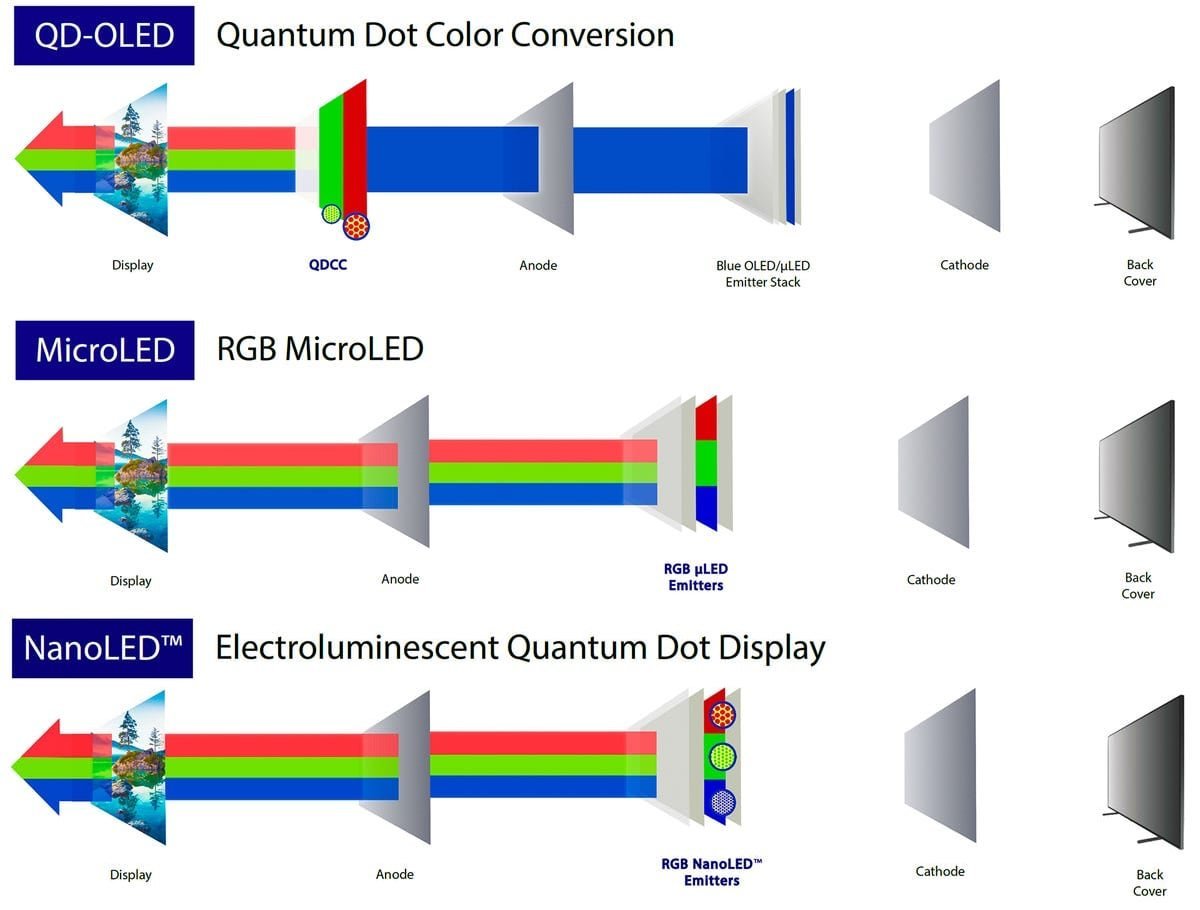Nanosys, the company that manufacturers quantum dots for display products like Samsung’s QLED and QD-OLED panels, has shown off a prototype of what it says is the world’s first “real QLED” display.

The prototype, which is correctly called an electroluminescent quantum dots display, was shown off to select reporters in a closed room at CES 2023.
CNET reporter Geoffrey Morrison was offered a chance to see a prototype of the display with his own eyes, though he was not allowed to film it or take anything other than a blurred photo. So we’ll let him describe it in his own words:
"And there on one table, farthest from the door, was the 6-inch prototype I had come to see. A maze of wires connected it to multi-tiered circuit boards. It was impossibly flat, like a vibrantly glowing piece of paper. A gallery of colorful nature images cycled through on screen, the de-facto standard content for pre-production display demos," Morrison wrote. "It felt like I was staring at something from the future, because, basically, I was. It's so cutting-edge, Nanosys said I could only show a blurred image and couldn't take any video."
Nanosys is calling its new, 6-inch, 540x960 resolution display “NanoLED”, but in fact most people acknowledge that it really should be considered as the world’s first QLED display as it’s completely based on quantum dots.
Existing QLED TVs that are available to buy today are really just LCD displays that utilise a layer of quantum dots to enhance colour. Brands like Samsung stole the QLED name for marketing purposes, but before that the term was used by industry experts to describe a much more futuristic display technology.
NanoLED might not be the most suitable name as people might imagine it is somehow just an upgraded version of Mini-LED or MicroLED. According to Flatpanels HD, the technology is also known by various other names, including electroluminescent quantum dot, emissive quantum dot, QDEL, ELQD, QD-LED, EL-QLED and AMQLED.
What’s more important than the name is how the technology works. Today’s existing QLED displays use photoluminescent quantum dots that absorb light from another source (LED or OLED pixels) before converting it into colours - for instance, blue light is converted into red or green with QD-OLED displays. However, Nanosys’s new NanoLED displays are made from electroluminescent quantum dots that conduct electricity and create their own light, without the need for separate light emitting diodes behind them.

Because NanoLED effectively eliminates the need for LEDs and OLEDs, it is a real breakthrough technology that has the potential to improve brightness, colour reproduction, energy efficiency and also make displays much thinner than is currently possible. Because there are fewer layers, they may also eventually become cheaper to make using the inkjet printing process.
Nanosys says NanoLED is its “ultimate goal” and says the technology may be ready for commercial production sometime around 2025 or 2026. Its biggest challenge right now is to extend the lifetime of its blue quantum dots. For the technology to be applied to consumer products, NanoLED displays must have a fairly long lifetime, but while it has achieved this with red and green quantum dots, it’s still having problems with blue. That said, the company indicated that it is making progress and that the issue will eventually be solved.
While other companies, such as China’s BOE, have showcased “real QLED” display prototypes in the past, Nanosys said its product is the world’s “first fully operational heavy metal free RGB emissive QD display”.
Nanosys appears to be leading the race with NanoLED at the moment but the company might not have it all its own way, as Samsung Display and TCL are both also believed to be working on their own variants of the same technology.